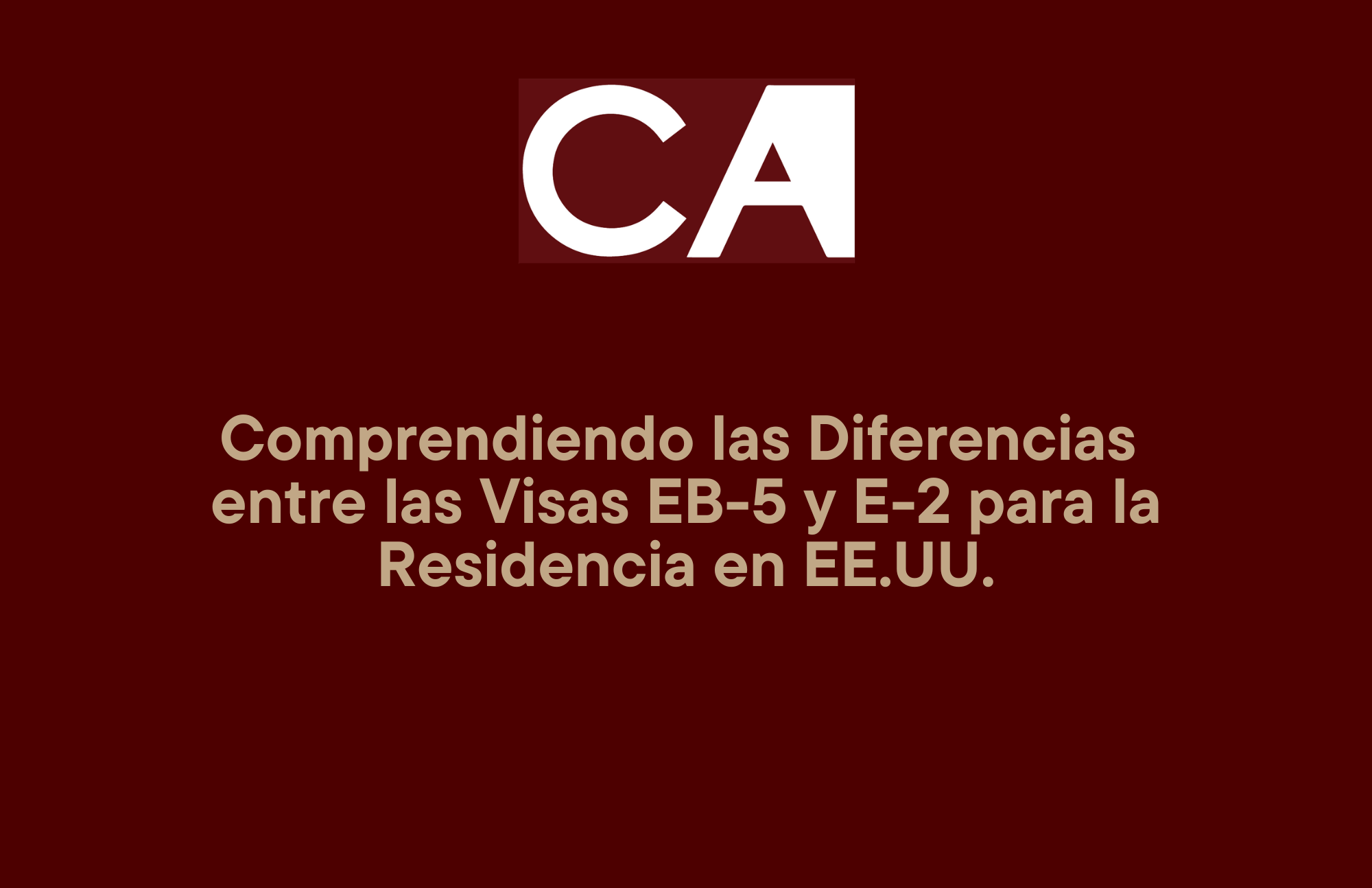The EB-5 Immigrant Investor Program has long been a gateway for individuals seeking to obtain U.S. permanent residency by making a qualifying investment in a new commercial enterprise. As the industry evolves, one topic gaining attention is the concept of filing EB-5 petitions with partial investments. This innovative approach offers flexibility for investors while ensuring they meet program requirements.
Recently, Pete Calabrese, CEO of CanAm Investor Services, and Christian Triantaphyllis, Partner at Jackson Walker LLP, discussed the nuances of partial investment filings in a comprehensive webinar. Their conversation shed light on the mechanics, benefits, and potential risks associated with this strategy, offering valuable insights for prospective investors.
Defining Partial EB-5 Investments
“A partial investment I-526E filing is where you file your EB-5 petition after making only part of the required $800,000 investment, with the intent to complete the full amount at a later date,” explained Triantaphyllis. This method provides investors with the opportunity to secure an earlier priority date—a critical factor given the potential for visa retrogression.
To ensure compliance, Triantaphyllis emphasized the importance of demonstrating the investor’s commitment. “The investment must be irrevocably committed to the new commercial enterprise (NCE). You can’t just recall the funds; they need to be actively invested, even if it’s not the full $800,000 initially.” He further highlighted the need for clear documentation, such as subscription agreements or side letters, to memorialize the terms of the investment.
Benefits of Partial Investments
Partial investments can be a practical solution for investors facing liquidity constraints. “We see scenarios where investors may have a property sale or other liquidity event occurring in a few months but want to lock in their priority date now,” noted Calabrese. “This approach allows them to do so while planning their full investment.”
Triantaphyllis added, “For individuals in the U.S., this strategy enables them to file an adjustment of status application concurrently. It’s especially beneficial for students approaching graduation who wish to secure employment authorization or parents looking to protect their children from aging out under the Child Status Protection Act.”
Moreover, securing an earlier priority date could mitigate the impact of future visa backlogs. “An earlier filing date means fewer delays when adjudication dates move forward,” Triantaphyllis explained.
Planning and Execution: Key to Success
While partial investments offer advantages, both experts stressed the importance of meticulous planning. “It’s not just about making an initial payment and hoping for the best,” said Triantaphyllis. “Investors need a clear roadmap for completing their investment and demonstrating the lawful source of funds.”
Calabrese underscored the need for collaboration with experienced professionals. “Proper planning with your attorney, tax advisors, and regional center is crucial to ensure your petition is as approvable as possible. A consistent and well-documented story is essential to avoid complications down the line.”
The irrevocable nature of the initial investment is a cornerstone of this approach. “Investors must be clear about their funding sources and timelines,” Triantaphyllis emphasized. “Any inconsistency could lead to accusations of material change, potentially jeopardizing the petition.”
Risks and Considerations
Despite its benefits, partial investment filings are not without risks. “Delaying the full investment can extend the sustainment period required for EB-5 eligibility, which might affect the timeline for repayment of funds,” Triantaphyllis cautioned.
Investors must also weigh the timing of their filings. “If USCIS opens the petition earlier than expected and the full investment hasn’t been made, it could result in a request for evidence (RFE),” said Calabrese. “That’s why we emphasize having a robust plan and adhering to agreed timelines.”
The type of project also plays a role. “If full funding won’t be available for over six months, investors might need to shift their focus to high-unemployment urban projects rather than rural ones, which tend to have faster processing times,” explained Triantaphyllis.
A Collaborative Effort
The success of partial investment filings relies on the collective expertise of immigration attorneys, regional centers, and tax professionals. “This is not a run-of-the-mill EB-5 filing,” Triantaphyllis noted. “It requires careful planning and communication to ensure a predictable process.”
Calabrese echoed this sentiment, emphasizing the importance of flexibility. “Our goal as a regional center is to work with investors to provide options that align with their circumstances while ensuring compliance with program requirements.”
Conclusion
Partial EB-5 investments represent a significant development in the EB-5 landscape, offering flexibility for investors while addressing real-world challenges such as liquidity constraints and visa backlogs. However, as both Calabrese and Triantaphyllis highlighted, success in this approach hinges on careful planning, consistent documentation, and collaboration with experienced professionals.
For investors considering this strategy, the message is clear: “With proper guidance and a clear plan, partial investments can be a viable and effective way to navigate the EB-5 process,” said Triantaphyllis. As the EB-5 program continues to evolve, this innovative approach is likely to become an increasingly valuable tool for investors worldwide.
Dive Deeper into EB-5:

























































































































































































































































































































